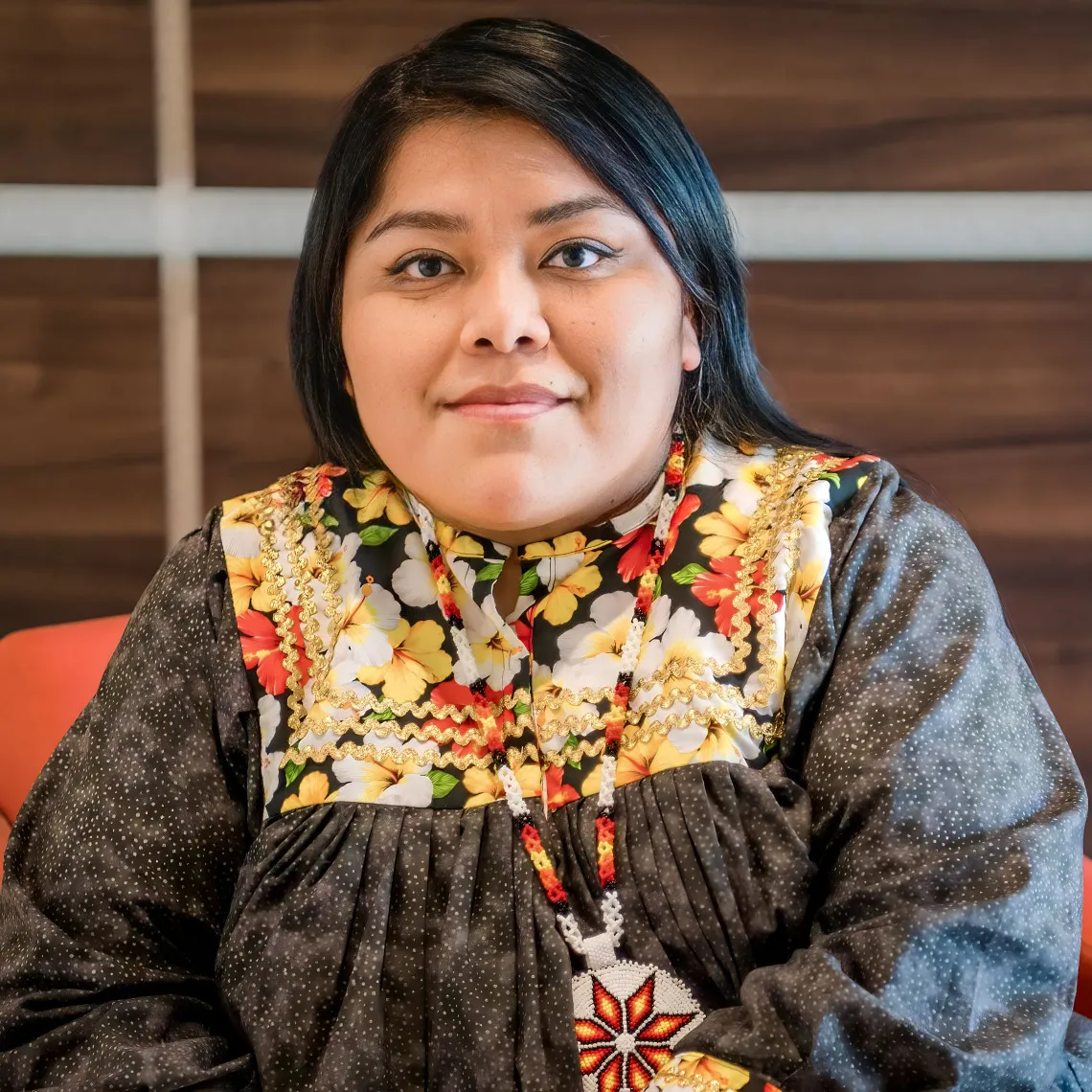Shannon Taylor: Bringing Traditional Ecological Knowledge to conservation and cartography

Shannon Taylor, White Mountain Apache and Navajo, resides on the ancestral lands of her mother’s people, Dzil Ligaii Saan N’dee (White Mountain Apache), in northeastern Arizona, which has a diverse ecosystem consisting of desert, woodlands, mixed conifer pine and spruce forests. The White Mountain Apache lands have a diverse habitat for a wide range of wildlife, including endangered species such as the Mexican grey wolf, Mexican spotted owl, Apache trout, and the loach minnow. She is a first-generation and non-traditional student in her family.
Shannon is currently a junior pursuing her Bachelor of Science degree in Geographic Information Systems Technology (GIST) and a minor in Environmental Science from the University of Arizona.
Why did you choose to study GIS technology and environmental science?
My aunt, who works with GIS and creating maps, is an inspiration for my academic path. My primary motivation to complete my degree is my community. The White Mountain Apache once lived, gathered, hunted and protected their homelands that spread across Arizona, New Mexico and Mexico. They were protectors and warriors. They ensured respect for all living, moving things in their world to ensure the environment, people and future generations had what they needed to survive. Today, the White Mountain Apache still live, practice traditional or cultural practices, gather, hunt and protect our homelands. We are modern-day warriors, protectors and products of our ancestors' survival. I believe once I receive my degree, I will become a steward or protector of the land just like my ancestors before me.
How have you been involved in the environment as a student (and otherwise, if you’d like!)?
Prior to transferring to the University of Arizona this year, I interned for two years at the American Indian Higher Education Consortium (AIHEC), where I worked with climate change and energy data to develop adaptation and renewable energy strategies. Through Earth Grant, I will be working directly with natural resources practitioners to compile and communicate cultural burning best practices in an internship with Conservation and Adaptation Resource Toolbox (CART)'s SWFireCAP adaptation roundtable.
Are there any other UArizona programs you’re involved in that you’d like to mention?
At the University of Arizona, I am involved with Planet Forward and Ilíiaitchik: Indigenous Correspondents Program (ICP). Through the Indigenous Correspondents Program, I hope to highlight the importance of Traditional (Indigenous) Ecological Knowledge (TEK) in Western science. I believe that becoming a steward of the land will ensure that the traditional stories, knowledge, practices, ceremonies, and language of Indigenous peoples will live on. I am also involved with several clubs at UArizona: the American Indian Science and Engineering Society(AISES), the Society for Advancement of Chicanos/Hispanics & Native Americans in Science(SACNAS), and the Miss Native American University of Arizona Club.
As an Arizona Online student, what advice do you have for other students pursuing similar academic careers paths, especially in terms of finding opportunities “outside of the classroom” to get involved with?
Get involved. Ask questions. Communication is key. Apply for opportunities. Join virtual meetings/presentations or dissertations that pertain to your degree or career path. Apply for internships or programs that interest you. Ask questions: If the meeting or program is not hybrid or virtual, email the professor or person in charge and ask if it is an option to join virtually. I did this several times with various programs or clubs I joined, and they happily accommodated my request to be a part of campus life virtually.
What are you interested in doing with your future career?
Traditional/Indigenous Ecological Knowledge (TEK) passed on to me growing up has a significant influence on my environmental understanding and practice. While working with CART, I hope to gain more knowledge of how to write effective and cohesive case studies; learn to collaborate with peers, professionals and organizations; and improve peer-review skills. After graduation, my career goal is to apply my knowledge of GIS and cartography to help with Native American communities' conservation efforts, historic preservation, land management and other tribal environmental issues. I also hope to advance the representation of Indigenous peoples and Indigenous knowledges in environmental decision-making along with Indigenous data sovereignty.
Why is it important to integrate culture into natural resource management ?
Traditional Ecological Knowledge (TEK) is reliable knowledge of the ecosystems and biomes that have been passed down through generations of Indigenous peoples. It is a form of Indigenous Science that can be implemented to save the environment and humanity from disasters. Most Indigenous societies are taught from a young age that respect for the environment is done to ensure their traditional practices can continue on to the next generation. Elements (earth, air, fire, water) are very important in Indigenous knowledge because those elements sustain human and non-human lives, as well as the universe, which are all connected to one another.
Why should students care about the environment, even if it isn't their major or area of study?
We have one Earth. Let us be a relative to all living and nonliving things on this planet and help protect it for future generations.

